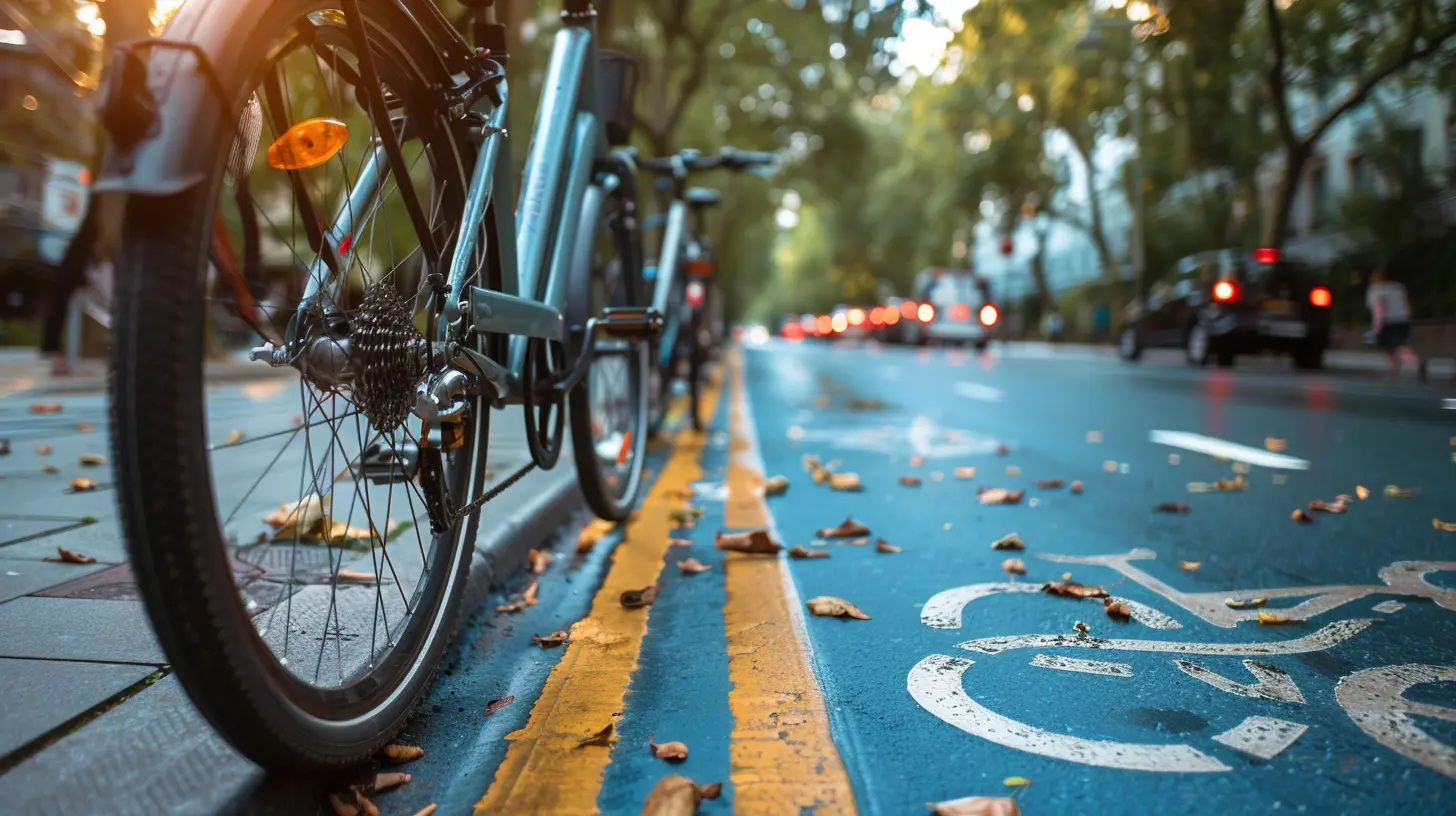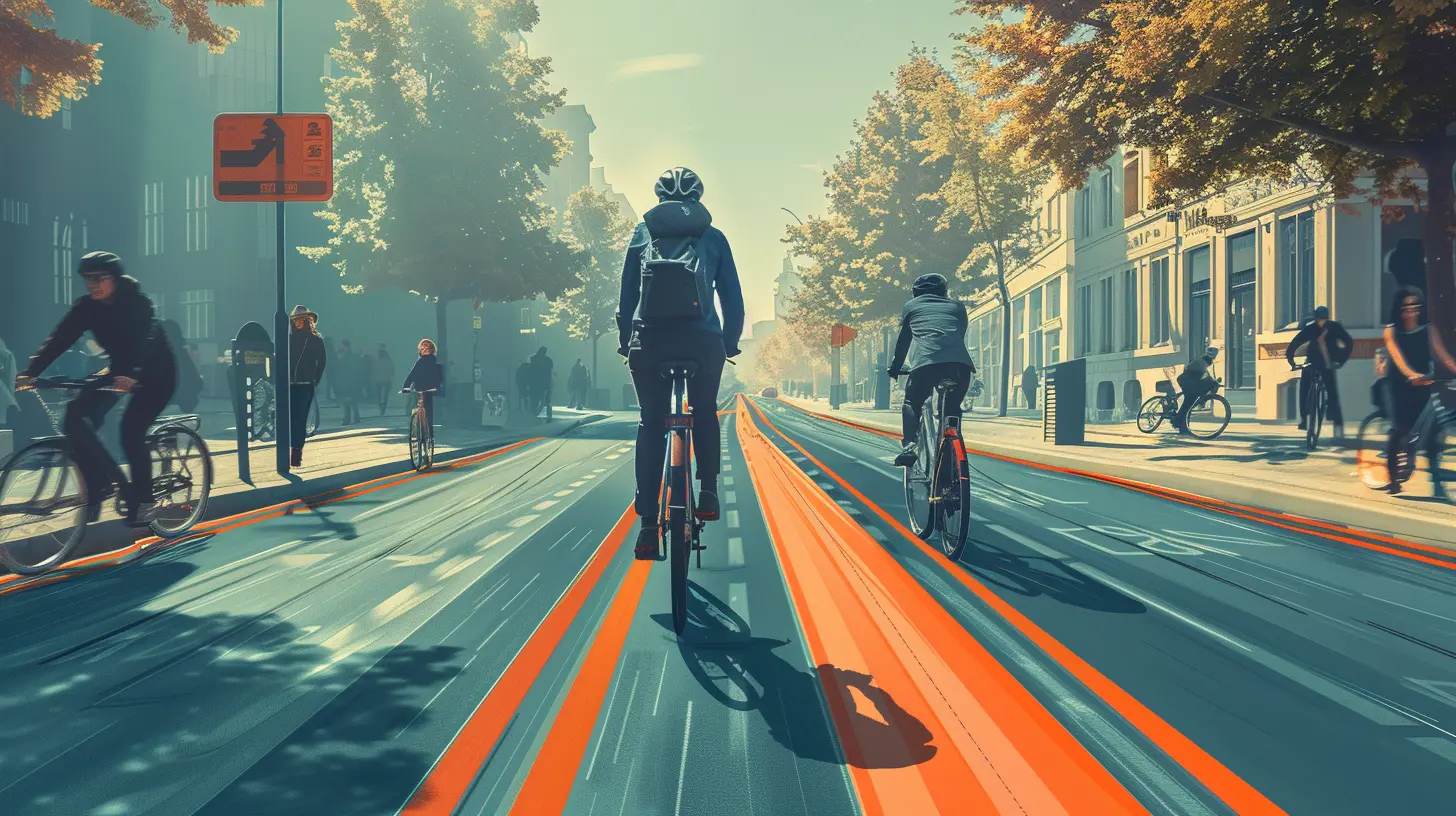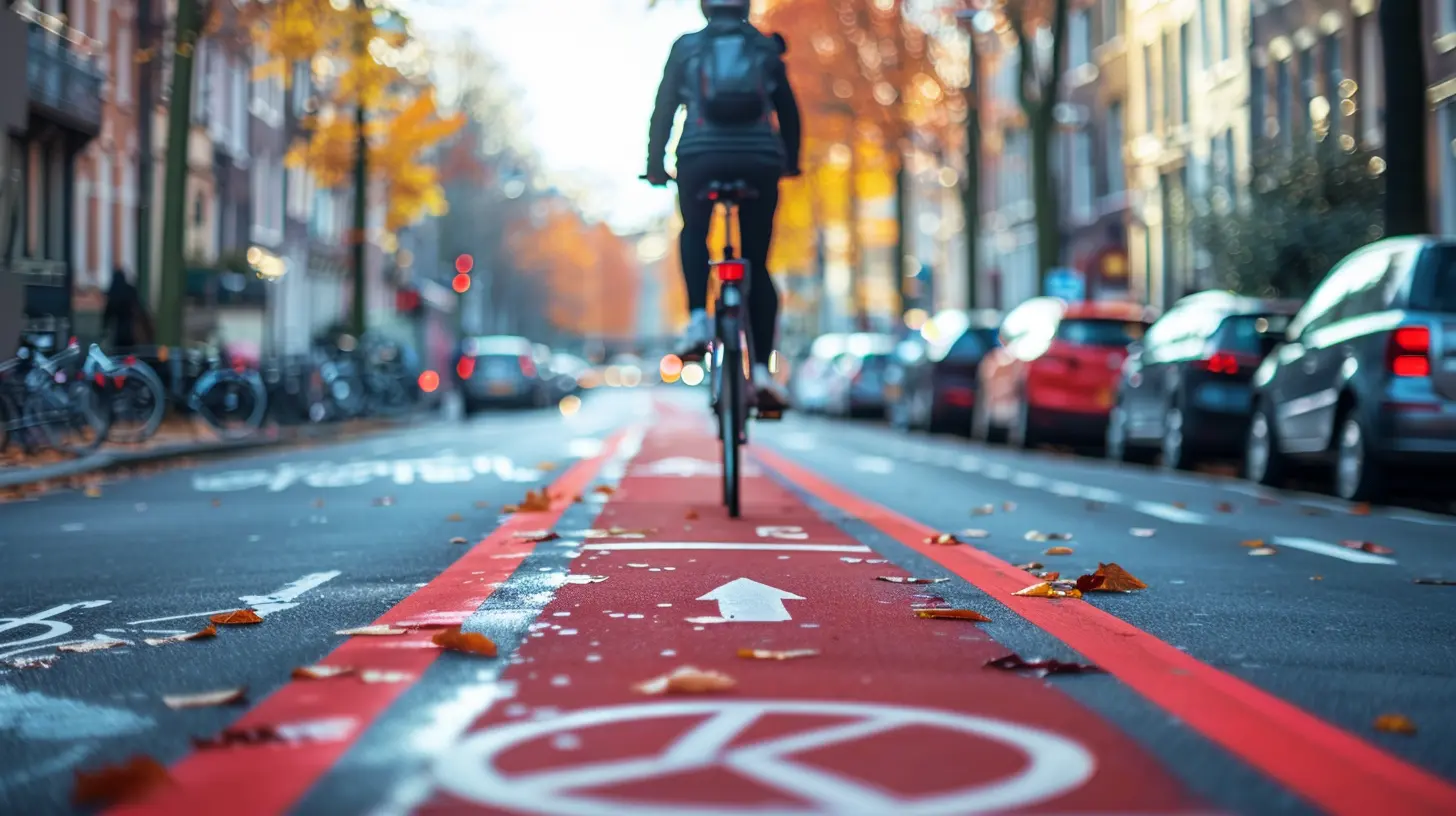Electric Bikes and Bike Lanes: Navigating Urban Infrastructure
19 May 2025
Electric bikes (or e-bikes) are taking over city streets, offering a fast, eco-friendly, and cost-effective way to get around. But as more and more riders hop on the e-bike trend, one big question remains—how do they fit into urban infrastructure? Bike lanes are designed with traditional cyclists in mind, so do they really work for electric bikes too? Let’s break it down and see how cities can adapt to this two-wheeled revolution. 
The Rise of Electric Bikes in Cities
E-bikes aren't just a passing fad—they’re here to stay. With advancements in battery technology, improved designs, and increasing awareness of environmental concerns, more people are ditching their cars in favor of these electric-powered rides.Why are e-bikes booming in popularity?
- Speed & Efficiency – They make commuting faster without breaking a sweat, perfect for urban life.
- Eco-Friendly – Unlike cars, they don’t emit harmful gases, reducing carbon footprints.
- Cost-Effective – Say goodbye to gas prices, parking fees, and public transport fares.
- Reduced Traffic Congestion – More e-bikes mean fewer cars on the road, making city life smoother for everyone.
But the growing number of e-bikes also brings challenges—especially when it comes to infrastructure. 
Are Bike Lanes Ready for Electric Bikes?
Traditional bike lanes were designed for pedal bikes, not electric-powered ones. That raises a few concerns:1. Speed Differences
E-bikes can reach speeds of 20-28 mph (depending on the class), which is much faster than the average cyclist. This speed gap creates a potential safety issue when slower riders share the same lanes.2. Lane Congestion
With more e-bikes joining traditional cyclists, bike lanes are becoming crowded. Some cities don’t have wide enough lanes, making it tricky for faster riders to pass slower ones safely.3. Safety Risks for Pedestrians & Cyclists
Due to their speed, e-bikes pose a greater risk of accidents in bike lanes, especially in areas where pedestrians cross or where slower cyclists may not expect a fast-moving vehicle approaching.4. Inconsistent Regulations
Some cities classify e-bikes as bicycles, while others lump them in with motorized vehicles, leading to confusion about where they can legally ride. Without clear rules, conflicts between cyclists and e-bike riders will only grow.Clearly, bike lanes need some serious updates to accommodate the rise of electric bikes. 
How Cities Can Adapt Bike Lanes for E-Bikes
Urban planners and policymakers must rethink bike lane designs to safely incorporate electric bikes. Here are some possible solutions:1. Separate Lanes for E-Bikes and Traditional Bikes
A one-size-fits-all bike lane approach might not cut it anymore. Cities could introduce dedicated e-bike lanes, giving faster riders a safer space while keeping standard cyclists comfortable.2. Wider Bike Lanes
Expanding existing bike lanes could allow for better traffic flow, preventing e-bikes from weaving dangerously through slower riders. More room also means safer overtaking.3. Clear Speed Limits and Regulations
Should there be speed restrictions in bike lanes? Some cities have already set limits for e-bikes, but enforcement remains an issue. Clear signage and regulations could help reduce conflicts.4. Smart Traffic Signals for Bikes
Installing bike-specific traffic signals could help regulate e-bike speeds at intersections, reducing accidents and improving traffic flow in busy areas.5. Public Awareness & Education
Many cyclists and motorists still don't fully understand e-bike laws. Hosting awareness campaigns or providing better signage can bridge the gap between e-bike riders, cyclists, and drivers.6. More Bike Parking & Charging Stations
As e-bike numbers grow, cities need to step up their game by adding more secure parking and public charging stations to accommodate riders.
The Debate: Should E-Bikes Be Allowed in Bike Lanes?
Not everyone is on board with allowing e-bikes in traditional bike lanes. Some people argue that e-bikes:✅ Make commuting more accessible for people who otherwise couldn’t keep up with regular cycling.
✅ Encourage fewer car trips, reducing traffic congestion and emissions.
✅ Support sustainable urban mobility without requiring major road expansions.
But on the flip side, critics say:
❌ Faster speeds increase crash risks for both cyclists and pedestrians.
❌ Shared lanes become overcrowded, making it stressful for slower riders.
❌ Not all e-bike riders follow safety rules, creating potential hazards on the road.
The key to solving this debate is balanced regulations—rules that protect everyone on the road while allowing e-bikes to thrive as a smart transport choice.
How Cyclists & E-Bike Riders Can Coexist
While cities work on adapting infrastructure, cyclists and e-bike riders must do their part to ensure smooth coexistence. Here’s how:For Traditional Cyclists:
- Be aware that some e-bikes travel faster than pedal-powered bikes. Stay predictable in your movements.- Avoid blocking bike lanes when stopping or adjusting your ride.
- Understand that e-bikes are part of the cycling community and not your enemy.
For E-Bike Riders:
- Ride responsibly—just because you can go faster doesn’t mean you always should.- Respect others in the bike lane and use a bell or verbal signal before overtaking.
- Follow local traffic laws, especially if your e-bike falls into a category that requires special regulations.
With mutual respect, both groups can share the road safely.
The Future of Electric Bikes in Urban Spaces
E-bikes are changing the way we navigate cities, and infrastructure must evolve to keep up. While we might still be adjusting to this shift, one thing is clear: electric bikes are a crucial part of the future of urban mobility.City planners, riders, and local governments must work together to create safe, efficient, and smart bike lanes that welcome all forms of cycling, including e-bikes. Until then, we can all do our part by riding responsibly and advocating for better infrastructure.
What do you think—should e-bikes have their own lanes, or is sharing the road the best way to move forward? Let’s keep this conversation rolling!
all images in this post were generated using AI tools
Category:
Electric BicyclesAuthor:

Vincent Hubbard
Discussion
rate this article
4 comments
Zelda Stone
Great article! Electric bikes are a game-changer for urban commuting. With better bike lanes, we can embrace eco-friendly travel while navigating city life—let's keep pedaling forward!
June 10, 2025 at 12:30 PM

Vincent Hubbard
Thank you! I completely agree—electric bikes and improved bike lanes are crucial for sustainable urban commuting. Let's continue to advocate for eco-friendly travel!
Talia Romero
Empower your ride—embrace innovation for a greener future!
June 2, 2025 at 2:57 AM

Vincent Hubbard
Thank you! Embracing innovation like electric bikes is key to creating sustainable urban environments and enhancing mobility.
Kathleen Cox
This article highlights a crucial aspect of urban living. As electric bikes gain popularity, it’s essential to prioritize safe infrastructure for all users. Compassionate planning can foster a shared space where cyclists and pedestrians coexist, creating a healthier, more connected community. Thank you for raising this awareness!
May 30, 2025 at 4:04 AM

Vincent Hubbard
Thank you for your insightful comment! I completely agree that safe infrastructure is key to fostering coexistence and enhancing urban living for everyone.
Cynthia Hodge
Electric bikes are a game changer for urban mobility. As cities adapt their infrastructure, the integration of dedicated bike lanes is crucial for safety and accessibility. Embracing this shift not only reduces congestion but also promotes a sustainable and efficient transportation future. Let’s prioritize the bike lane revolution!
May 29, 2025 at 12:15 PM

Vincent Hubbard
Absolutely! Dedicated bike lanes are essential for ensuring safety and maximizing the benefits of electric bikes in urban areas. Let's keep pushing for this vital infrastructure!



